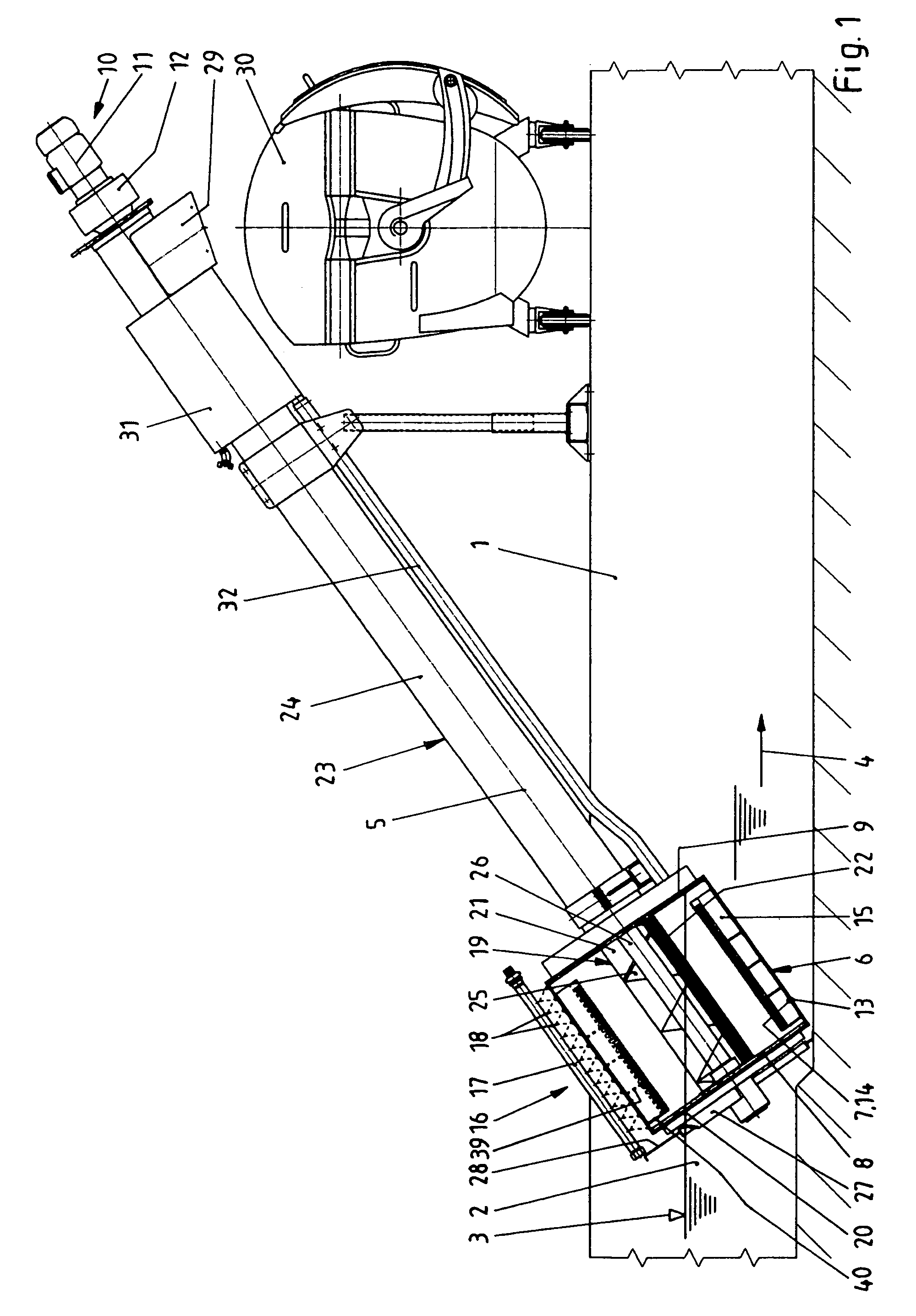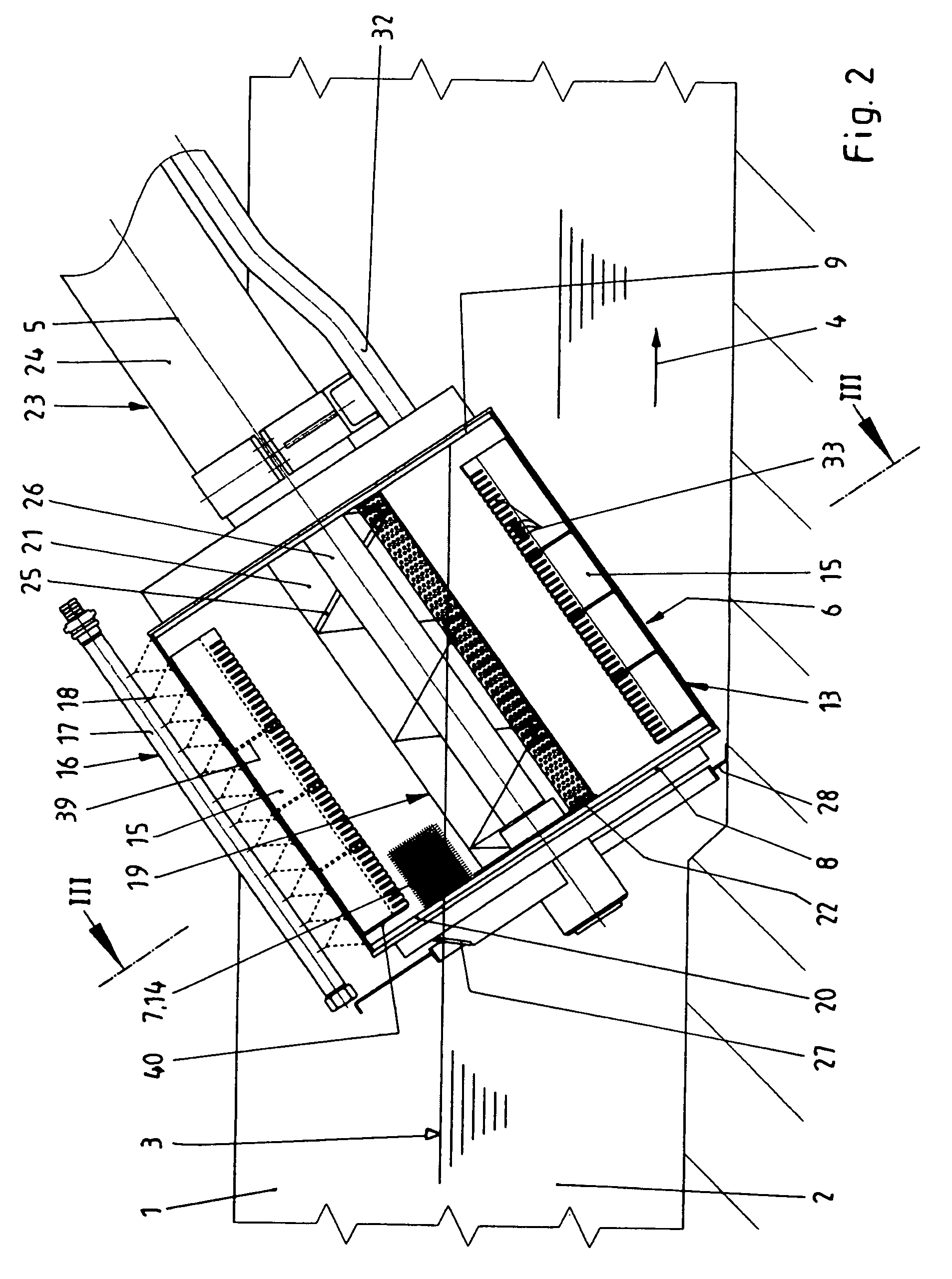Apparatus for removing material from a liquid flowing through a channel
a technology of liquid flowing through a channel and an apparatus, which is applied in the direction of moving filter element filters, separation processes, filtration separation, etc., can solve the problems of reducing the efficiency of the equipment, and reducing the cost of the equipment. , to achieve the effect of improving the pre-dewatering effect, and reducing the cost of the equipmen
- Summary
- Abstract
- Description
- Claims
- Application Information
AI Technical Summary
Benefits of technology
Problems solved by technology
Method used
Image
Examples
Embodiment Construction
[0034]Referring now in greater detail to the drawings, FIG. 1 shows a part of a channel 1 in which a liquid 2 contaminated with material to be screened and having a water level 3 is flowing in the direction of arrow 4.
[0035]The novel apparatus for removing material from the liquid 2 flowing through the channel 1 is located in the channel 1 such that its axis 5 is arranged in a inclined manner. Preferably, the angle of inclination is approximately 35°. However, other angles of inclination are also possible. The apparatus includes a cylindrical sieve grate 6 including a mesh fabric 7. The sieve grate 6 has an open front side 8 on the inflow side thereof, the contaminated liquid 2 flowing through the open front side 8 into the interior of the sieve grate 6. A sealed and thus hydraulically closed back side 9 is located downstream. The sieve grate 6 is rotatably arranged near the back side 9, and it is sealed with respect to elements not rotating. The sieve grate 6 is rotatably driven ab...
PUM
| Property | Measurement | Unit |
|---|---|---|
| diameter | aaaaa | aaaaa |
| size | aaaaa | aaaaa |
| angle of inclination | aaaaa | aaaaa |
Abstract
Description
Claims
Application Information
 Login to View More
Login to View More - R&D
- Intellectual Property
- Life Sciences
- Materials
- Tech Scout
- Unparalleled Data Quality
- Higher Quality Content
- 60% Fewer Hallucinations
Browse by: Latest US Patents, China's latest patents, Technical Efficacy Thesaurus, Application Domain, Technology Topic, Popular Technical Reports.
© 2025 PatSnap. All rights reserved.Legal|Privacy policy|Modern Slavery Act Transparency Statement|Sitemap|About US| Contact US: help@patsnap.com



